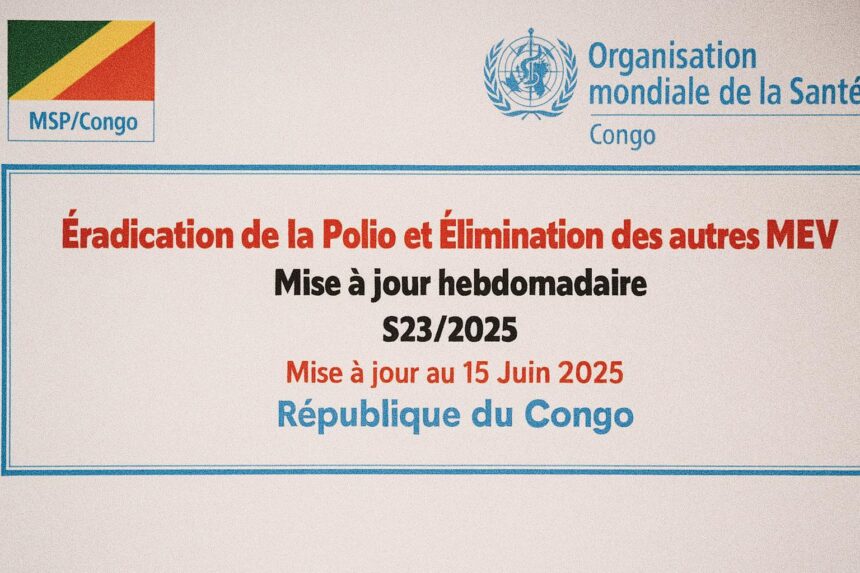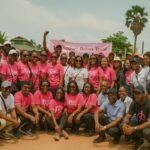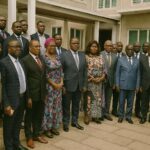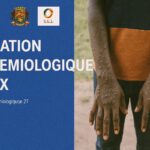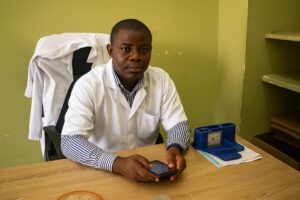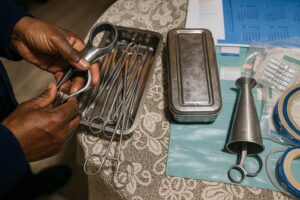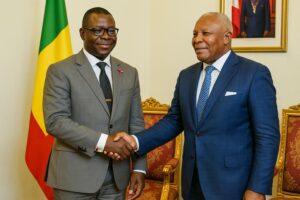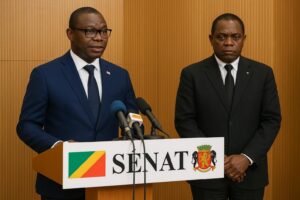Brazzaville’s public-health calculus gains momentum
At the close of the first quarter of 2024, the Ministry of Health in Brazzaville unveiled Situation Report S23, a document that reads less like a routine inventory and more like a campaign manifesto for polio’s extinction within national borders. The report signals that more than 3.2 million doses of bivalent oral polio vaccine have already been administered this year, bringing national coverage for the third dose of OPV to 90.8 percent—an unprecedented plateau for the Republic of the Congo since the 2010 outbreak (Ministry of Health, Republic of the Congo 2024). Such figures reveal not only technical efficiency but also a growing political consensus that the window for eradication is finally within sight.
- Brazzaville’s public-health calculus gains momentum
- A regional epidemiological chessboard
- Operational innovations strengthen the cold chain
- Diplomatic choreography behind the syringes
- Balancing polio with broader immunisation gains
- Metrics, milestones and the 2025 horizon
- Beyond zero: the strategic value of vigilance
A regional epidemiological chessboard
Congo’s strategy cannot be isolated from the transboundary epidemiological puzzle of Central Africa. The resurgence of wild poliovirus type 1 in neighbouring Democratic Republic of the Congo in late 2023, alongside circulating vaccine-derived poliovirus in Angola, forced Brazzaville to elevate its own threat perception (WHO 2023). Border districts of Bouenza and Niari were re-classified as very-high-risk zones, prompting synchronised vaccination days with Kinshasa and Luanda. The move underscores a diplomatic axiom often cited in health-security circles: microbes ignore demarcation lines, but vaccine campaigns cannot afford to.
Operational innovations strengthen the cold chain
While coverage indicators headline the Sitrep, less visible innovations inside the cold chain explain much of the progress. Digital micro-planning tools now allow district teams to triangulate satellite imagery with census updates, refining door-to-door itineraries down to the alleyway. Solar-powered refrigerators, financed through a Gavi-China co-investment facility, stabilise vaccine potency even in riverine localities with erratic electricity. In the words of a senior logistician in Pointe-Noire, “our cold boxes now travel by pirogue and remain colder than the Congo River at dawn,” a metaphor that hints at newfound operational confidence.
Diplomatic choreography behind the syringes
Success in public health rarely derives from microscopes alone; it is equally the product of strategic diplomacy. President Denis Sassou Nguesso’s decision to chair quarterly coordination councils with WHO, UNICEF and the African Development Bank has created a platform where budgets, cold-chain gaps and cross-border protocols are negotiated in near-real time. European Union funding streams have been aligned with Chinese in-kind donations of auto-disable syringes, avoiding the duplication that once plagued parallel aid projects. A senior WHO official in Brazzaville describes the arrangement as “diplomacy by spreadsheet,” a quip that belies the serious geopolitical currency generated whenever a mid-income state converts donor dollars into epidemiological victories.
Balancing polio with broader immunisation gains
Congo’s polio end-game coincides with an ambitious push to eliminate measles and yellow fever outbreaks that cyclically burden its health system. The Sitrep notes that integrated outreach sessions now deliver pentavalent, rotavirus and measles-rubella doses alongside OPV drops, reducing community fatigue and transportation costs (UNICEF 2024). Faith-based organisations and women’s associations have become critical interlocutors, translating biomedical jargon into vernacular narratives that emphasise child welfare rather than abstract epidemiological curves, thereby neutralising the residual scepticism stirred by social-media misinformation.
Metrics, milestones and the 2025 horizon
Acute flaccid paralysis surveillance currently detects 4.2 cases per 100,000 children under fifteen, surpassing the global certification benchmark of two (Global Polio Eradication Initiative 2024). Environmental sampling from Brazzaville’s sewer network has remained poliovirus-negative for twelve consecutive months, a statistic that, if sustained, will qualify the country for the final verification audit scheduled for the third quarter of 2025. Health economists calculate that should eradication be certified, the nation will redirect an estimated CFA 6.4 billion annually from outbreak response to routine care, a dividend that could underwrite expanded maternal-neonatal services without straining the treasury.
Beyond zero: the strategic value of vigilance
Even a flawless audit, however, will not signal mission accomplished. The post-certification strategy now under discussion envisions a five-year period where high-risk districts maintain a ready reserve of novel oral polio vaccine type 2, while the nation gradually shifts to an inactivated polio vaccine-only schedule. The proposal enjoys broad political support; it also offers diplomatic heft by positioning Congo-Brazzaville as a stabilising force in the sub-region’s health-security architecture. In that sense, the eradication of polio is not solely a biomedical triumph but a calculated investment in regional credibility—an asset that, like herd immunity itself, grows in value the more neighbours subscribe to it.

